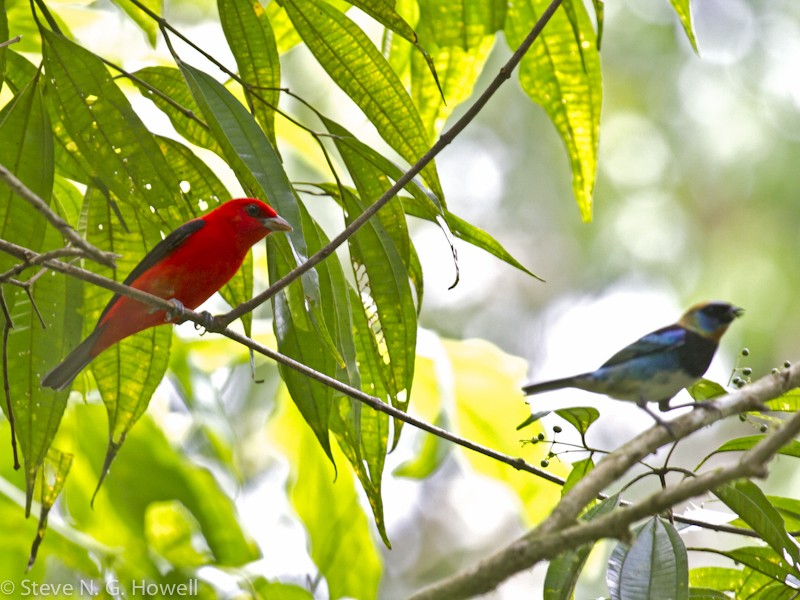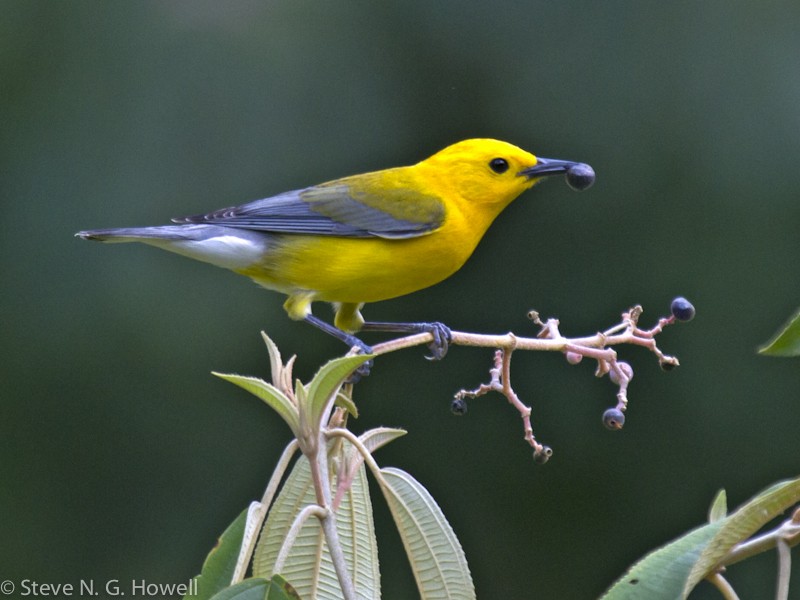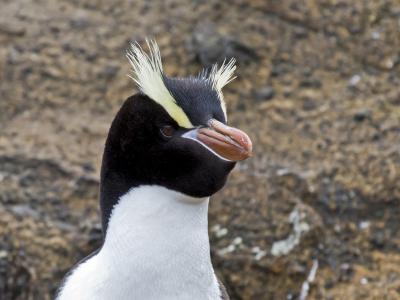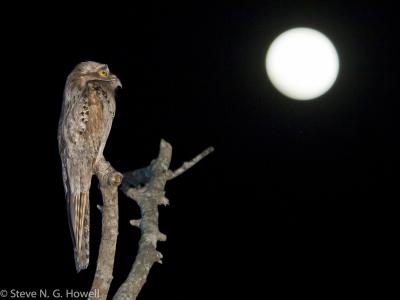Honduras
The Hidden Gem of Central America
-
Feb 6-15, 2025
Steve Howell
Honduras is one of the least-known countries in the Americas and remains stubbornly off the beaten track. However, with specialty birds such as Resplendent Quetzal, Lovely Cotinga, Keel-billed Motmot, Wine-throated Hummingbird, and the endemic Honduran Emerald, plus comfortable lodges and beautiful scenery, visitors will quickly realize that the country provides a great introduction to Neotropical birding.
Boasting more square miles of protected area than Costa Rica, the national parks and preserves of Honduras shelter over 700 species of birds. Our tour will cover a wide selection of these protected habitats, from the misty cloud forests of La Tigra National Park to the marshes of Lago de Yojoa and the lowland coastal jungles of the Caribbean coast.
Day 1: Our tour begins in Comayagua, where the new international airport is situated. If there is time, we’ll do some late afternoon birding nearby. Night in Comayagua.
Day 2: After a morning birding the dry interior habitats near Comayagua, where species include Streak-backed Oriole, Nutting’s Flycatcher, and White-lored Gnatcatcher, we’ll drive to our hotel in the pine-oak foothills outside Tegucigalpa and near La Tigra National Park. Afternoon birding around our hotel may produced birds such as Bushy-crested Jay, Yellow-backed Oriole, Blue-and-white Mockingbird, and Yellow-throated [White-naped] Brushfinch. Night near Tegucigalpa.
Day 3: La Tigra National Park offers excellent mountain birding virtually on the outskirts of Tegucigalpa and we’ll spend most of the day in this beautiful area. The network of roads and trails will enable us to see many of Central America’s higher-elevation species. These include a fine variety of hummingbirds, such as Wine-throated Hummingbird, the range-restricted Green-breasted Mountain-gem, and possibly Garnet-throated Hummingbird. Other species we might encounter include Emerald Toucanet, Resplendent Quetzal, Mountain Trogon, Spotted and Strong-billed Woodcreepers, Barred Forest-Falcon, Mountain Elaenia, Rufous-browed Wren, Slate-colored Solitaire, Rufous-collared Thrush, and Crescent-chested Warbler. Night near Tegucigalpa.
Day 4: We’ll spend the morning birding near our hotel, looking for things we may have missed the previous day before driving northwest to Panacam Lodge at the edge of Cerro Azul Meámbar National Park on the east side of Lago de Yojoa. The lodge grounds are rich in birds, and we’ll be looking especially for the scarce and local Keel-billed Motmot. The hummingbird mix here is somewhat different from that at La Tigra and may include the beautiful little Black-crested Coquette and impressive Violet Sabrewing. Night at Panacam Lodge.
Days 5-6: We’ll have two full birding days based out of Panacam. One day we’ll drive to a recently discovered site for the endemic Honduran Emerald, which has a very localized distribution in scattered rain-shadow habitats. These dry habitats have an interesting mix of species that also include Spot-bellied Bobwhite, Elegant Trogon, Yellow-tailed Oriole, and Green Jay. We’ll also bird the nearby Lake Yojoa, where we should see an array of waterbirds including Fulvous and Black-bellied Whistling-Ducks, Northern Jacana, and perhaps Ruddy and Gray-breasted Crakes. The boardwalk at the Los Naranjos archaeological site offers excellent birding, with species such as Laughing Falcon, Gartered Trogon, Green-breasted Mango, Streak-headed Woodcreeper, Rufous-breasted Spinetail, Rufous-naped Wren, and a wide range of wintering North American migrants. The grounds of Panacam and the entrance road are home to species including Keel-billed Toucan, Collared Aracari, Northern Barred and Wedge-billed Woodcreepers, Crimson-collared Tanager, Green-backed Sparrow, Prevost’s Ground-Sparrow, and perhaps even a Northern Royal Flycatcher or Mayan [Black-faced] Antthrush. Nights at Panacam.
Day 7: We’ll have a last morning to bird around Panacam before heading north to the coastal lowlands for our last 3 nights and a different suite of habitats and birds. Night near Tela.
Days 8–9: Several excellent birding locations lie within easy reach of our lodge. One morning we’ll visit Lancetilla Botanical Gardens, home to a rich selection of forest and edge birds including Rufous-tailed Jacamar, Black-headed Trogon, Great Antshrike, Uniform Crake, Chestnut-colored and Black-cheeked Woodpeckers, Long-billed Hermit, White-collared and Red-capped Manakins, Long-billed Gnatwren, Scarlet-rumped and Golden-hooded Tanagers, and Olive-backed Euphonia. We’ll keep a careful eye on the sky for various raptors, that might include include the fancy White Hawk and impressive King Vulture. Another site we’ll visit is the Cuero y Salado Wildlife Refuge, where a boat trip through the wetlands can produce Bare-throated Tiger-Heron, Boat-billed Heron, Sungrebe, American Pygmy Kingfisher, Black-crowned Antshrike and perhaps even a roosting Northern Potoo. One afternoon we’ll visit the Rio Santiago resort to watch swarms of hummingbirds of up to a dozen species. These will likely include the stunning White-necked Jacobin, dazzling Crowned Woodnymphs, and with luck the distinctive Band-tailed Barbthroat, plus there’s always a chance for things like Lovely Cotinga or roosting Spectacled Owl. Nights near Tela.
Day 10: Depending on our flight departure times, there may be a chance to enjoy another morning birding near the lodge before we depart for San Pedro Sula, where the trip concludes with flights home.
Note: The information presented below has been extracted from our formal General Information for this tour. It covers topics we feel potential registrants may wish to consider before booking space. The complete General Information for this tour will be sent to all tour registrants and of course supplemental information, if needed, is available from the WINGS office.
2023 Narrative
IN BRIEF: From bromeliad-laden highland cloud forests with Resplendent Quetzals to dry interior scrub with White-lored Gnatcatchers, and from a lunchtime viewing swarms of feeding hummingbirds and honeycreepers to a delightful boat ride with reclusive pygmy kingfishers and Sungrebes, this exciting tour sampled the avian riches of a little-known country. Highlights were many, including the tiny Wine-throated Hummingbird; the endemic Honduran Emerald; the always-popular motmot quartet (Turquoise-browed, Keel-billed, Lesson’s, and Tody); very obliging Double-toothed Kite and Laughing Falcons; an abundance of migrant warblers; and snappy White-collared Manakins, along with some rarely recorded species such as White-crowned Pigeon and Slate-colored Seedeater. This year’s weather was decidedly hot and dry and sunny, a pleasant change from our home regions, and everywhere we went we found friendly and welcoming people and delicious food.
IN DETAIL: All arrived on time at the new airport and, after a short transfer to the hotel and time for some rest, we had our introductory meeting followed by some relaxed late afternoon birding and dinner before a good sleep. An early start the first morning found us at a remnant patch of dry tropical forest, where the trees were dripping with orioles (of five species!), along with other species ranging from Limpkin to Red-throated Parakeet. A short walk produced a nice selection of migrants (most notably Cedar Waxwings, plus Yellow-throated Vireo and Magnolia Warbler) and residents (including Turquoise-browed Motmot and Rufous-browed Peppershrike). We readied to leave as the heat kicked in, but not before appreciating a pair of soaring Great Black Hawks and a stunning adult White-tailed Hawk rising on the first thermals. The drive to and through Tegucigalpa gave us a better sense of the country before arriving at our rooms in delightfully clear mountain air for lunch and a siesta. Late afternoon birding around our lodging produced a nice selection of interior highland species, including Bushy-crested Jays, Yellow-backed Orioles, Guatemalan Flicker, a very obliging pair of Slate-throated Whitestarts (aka redstarts), and a perched-up Rusty Sparrow, followed by a relaxing cold beer and delicious dinner.
The next day we spent in and around La Tigra National Park, where almost the first birds we saw were a pair of courting Resplendent Quetzals, both perched and in spectacular, plume-flowing flight overhead—wow! Next we watched a Slate-colored Solitaire pouring forth his ethereal fluty song before we started to really work for birds in the gusting strong winds. A male Mountain Trogon took some effort, and then the mixed-species flocks produced handsome Crescent-chested Warblers among the Common Bush-tanagers (aka chlorospingus). A singing male Flame-colored Tanager and very confiding Yellowish Flycatchers in the parking lot preceded our walk through fabulous, bromeliad-laden and tree-fern-dotted cloud forest to a shrubby clearing where, with patience, we finally located a male Wine-throated Hummingbird.
Other highlights of the morning included the very localized Green-breasted Mountain-gem and elegant Swallow-tailed Kites sweeping overhead in the wind. It was also great to see many friendly locals out enjoying the forest. After lunch, with delicious mora juice, we headed back for an afternoon break before venturing out to ‘warbler alley’—a quiet track through brushy woods loaded with warblers, including Golden-winged, Nashville (a local rarity), and numerous Tennessee Warblers with red-stained foreheads, along with good views of Chestnut-capped Brushfinch and Orange-billed Nightingale-Thrush. Another fine dinner with great local fruit juice prepped us for sleep before our longest travel day.
After a ‘late’ breakfast we started with some birding in open pine woods, where highlights included simply stunning Turquoise-browed Motmots, White-naped aka Yellow-throated Brushfinch, a lone Steller’s Jay, and a nice pair of Olive Warblers. A late morning stop in recently burned, ‘apocalyptic’ thorn forest proved surprisingly productive, with perky White-lored Gnatcatchers, a Banded Wren, and four taxa of Myiarchus flycatcher, including both flavidior (‘Salvadoran’) and nominate nuttingi (‘Nicoya’) flycatchers—other than looking and sounding different they occur together, pretty good evidence that they are separate species! After a roadside buffet lunch (with our only House Sparrows of the trip!) and a gas station stop (with excellent views of nesting Montezuma Oropendolas, along with their nest-parasite Giant Cowbirds), we made a short stop on the Panacam Road, which produced numerous warblers, Golden-hooded and male Summer Tanagers, and Great Crested and Dusky-capped Flycatchers, completing our sweep of all six Honduran Myiarchus flycatchers in one day! Also notable was a vocally and visually puzzling trogon that was presumably a hybrid Collared x Gartered! After settling in to our wonderful rooms we wandered around the grounds and enjoyed Violet Sabrewings at the feeders, plus both hermits, and walk-away scope views of a Double-toothed Kite devouring its large insect prey. Not bad for a travel day!
Our first birding day based at Panacam we visited the delightful Finca Luna del Puente, starting with dizzying numbers of birds, many of them bathing in wet leaves—from brilliant Painted Buntings to handsome Yellow-breasted Chats, along with tiger-herons and the local endemic taxon of Rufous-naped (‘Honduran’) Wren. Birding the finca trails produced numerous warblers (including male Hooded, and then Worm-eating side-by-side with Grace’s—a bit of a biogeographic mindtrip), plus walk-away Ferruginous Pygmy-Owl and Tody Motmot. Shade coffee and chocolate are products of the finca and we enjoyed sampling both. After lunch it was on to a subtly drier habitat where, with some work, we found the endemic and range-restricted Honduran Emerald, along with a couple of majestic adult King Vultures and a surprise pair of Dusky Antbirds.
A full morning at Lake Yojoa was indeed full, with about 100 species and lots of birds. Notable were large numbers of Fulvous Whistling-Ducks, plus Least Grebes, Northern Jacanas, Snail Kites (vocalizing!), and an almost paralyzing keel-billed procession of birds for the first two hours, including parrots, oropendolas, trogons, Collared Aracaris, both tityras, flycatchers, and some 14 species of warblers, headlined by Kentucky, Golden-winged, and Yellow-throated. After lunch we took a well-earned siesta before birding around the lodge, where highlights included the understated Mistletoe (née Paltry) Tyrannulet, very obliging Short-billed Pigeons, kick-ass male Violet Sabrewings, and the Panacam signature bird, Keel-billed Motmot.
The next morning dawned sunny (again!) and we enjoyed a leisurely couple of hours birding around the lodge, including a dawn chorus of four motmot species, along with great views of Yellow-winged Tanagers and a male Red-throated Ant-tanager. Birding along the road out to the highway produced several other species, including the dapper Chestnut-capped Warbler, stunning views of both oropendola species and a flock of Aztec Parakeets feeding in a sunlit tree, and an elegant Swallow-tailed Kite flapping past. We arrived in Tela with good time to check-in at our hotel before a late afternoon stroll on the grounds, where a low-flying Lesser Yellow-headed Vulture showed well, and a fly-by White-crowned Pigeon was a surprise rarity.
The next morning found us birding at Lancetilla, where the high diversity of species meant we never knew what might appear: highlights included a pair of show-off Laughing Falcons, a male White-collared Manakin, the understated Black-striped Sparrow and overstated male Scarlet-rumped Tanager, a surprise Mangrove Cuckoo, elusive Great Antshrikes, and of course that singing Slate-colored Seedeater! From Lancetilla we headed to a hot (in more ways than one!) lunch at Rio Santiago, where the hummingbird show featured repeated, close-up views of nine species, plus dazzling Green and Shining Honeycreepers. Back at the hotel there was time for some to enjoy a wave-splashed dip in the warm Caribbean waters before another delicious dinner and good sleep in preparation for our earliest start of the trip.
Our earliest morning start was well worth it, with a wonderful boat trip at the Cuero y Salado wildlife refuge, where birds featured kingfishers ranging from the huge Ringed to the tiny American Pygmy, great views of Sungrebe, a roosting Northern Potoo, sleepy Boat-billed Herons, and a passing male Magnificent Frigatebird, followed by a delicious lunch under shady trees and a decidedly different rail car ride back to the bus! The unrelenting sun and cloudless blue skies decided against any late afternoon birding so we appreciated a relaxing time at our the lodge before a fine last dinner and preparations for homeward flights the next day. It was an amazing adventure to some beautiful places, and with a stunning selection of birds. Thanks to all for coming and making it such a wonderful trip.
- Steve Howell
Maximum group size seven with one leader.

































